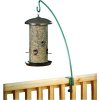For any considering an excursion down here for some birding and wildlife shooting, I haven't posted any recent wildlife stuff in a while, as it's not a general topic too many are interested in. But thought those that are might like a glimpse of some of the stuff we've been seeing down here the past few weeks...so here's an appetizer of stuff taken since Christmas - a bit of wetlands tapas:
Roseate spoonbill:

Red-shouldered hawk:

Great blue heron in flight, low over the water:

Wood stork flying past:

Alligator opening its mouth to exhaust excess heat:

Brown water snake all coiled up on a palm frond fan:

Pied-billed grebe:

Female anhinga with a nice sized fish:

Green iguana wearing his orange mating colors, saying hello:

Osprey, fresh out of the water with a fish catch, shaking itself off while flying:

Common yellowthroat down by the water:

The hard to find and hard to catch in the open, sora:

A Florida cooter, taking a load off his feet to rest high and dry:

The lovely male least bittern, another bird that birders from abroad really hope to see down here:

Tricolor heron, making the plunge for a fish:

Roseate spoonbill:

Red-shouldered hawk:

Great blue heron in flight, low over the water:

Wood stork flying past:

Alligator opening its mouth to exhaust excess heat:

Brown water snake all coiled up on a palm frond fan:

Pied-billed grebe:

Female anhinga with a nice sized fish:

Green iguana wearing his orange mating colors, saying hello:

Osprey, fresh out of the water with a fish catch, shaking itself off while flying:

Common yellowthroat down by the water:

The hard to find and hard to catch in the open, sora:

A Florida cooter, taking a load off his feet to rest high and dry:

The lovely male least bittern, another bird that birders from abroad really hope to see down here:

Tricolor heron, making the plunge for a fish:




































































